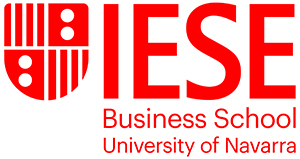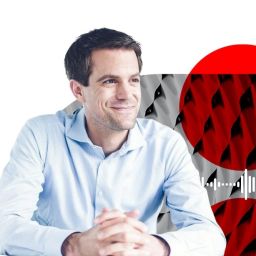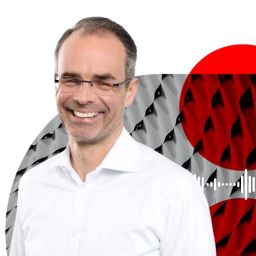C-suite leaders were already familiar with the need for corporate resilience, positive change management and disruption strategies when the pandemic hit and changed everything. Overnight, “leadership under uncertainty” took on an entirely new meaning.
As we continue to forge ahead in a context of ambiguity, the following insights – drawn from the fields of business, academia, social science and psychology – offer broad-based strategies for C-suite leaders to navigate the present while planning for the future.
6 C-level strategies for managing in these uncertain times
1. Embrace a new definition of happiness
C-suite executives are charged with generating long-term sustainable value for their firms, but successful leadership entails more than steering corporate operations. To be effective, executives need to stay keenly attuned to their well-being and happiness levels, says Tal Ben-Shahar, an expert on positive psychology.
“To be effective, executives need to stay keenly attuned to their well-being and happiness levels.”Tal Ben-Shahar
The first task at hand might be embracing a new definition, since study after study has found external markers like job titles, financial success and corner offices bear little correlation with happiness. According to psychologists, strong interpersonal relationships, health and longevity are the ultimate predictors of happiness, which should be viewed as falling on a continuum rather than a destination.
When it comes to fostering happiness in the workplace, a little goes a long way according to Ben-Shahar’s research. “In organizations, we find that even small increases in happiness lead to significant upturns in productivity, creativity, teamwork, engagement and motivation. It’s not about radically increasing levels of happiness but rather driving incremental increases.”
2. Complete the stress cycle
Stressors come in all shapes and forms and accumulate on a daily basis, from getting cut off in traffic to dealing with contentious clients. According to Dr. Emily Nagoski, health expert and co-author of the bestseller Burnout, it’s important to differentiate the stress from the stressors and controllable versus uncontrollable stressors, and take steps to “complete the stress cycle” to return to a state of relaxation after escaping the proverbial tiger. To this end, the first lines of defense include moving – even for short lengths of time – breathing, talking to others and laughing, among others.
Ben-Shahar offers similar advice. “The problem is not stress per se,” he explains. “The problem is not allowing time for recovery. We need to energize our lives with recovery.” He recommends building recovery into our routines through exercise, regular breaks from our work and delineations between our personal and professional schedules, which brings us to the next point…
3. Establish clear boundaries and transitions
Temporary work-from-home mandates have now become the norm in many companies, blurring the lines between our personal and professional spheres. In order to smooth this transition, Prof. Nancy Rothbard of the Wharton School of Business recommends putting clear time and spatial boundaries when working from home.
“As many knowledge workers and their managers face more months of remote work, it’s vital to understand how you and your employees navigated work-family boundaries in more traditional office environments — and how mandatory working from home affects these approaches,” she says. “Only then can you begin structuring remote work that is not only productive but honors everyone’s boundaries over the long term.”
4. Script the future
As the saying goes, “The best way to predict the future is to invent it.” This is precisely what Bill Gates does during his famous twice-yearly “think weeks” and what Amazon’s senior leadership team does every Tuesday for four-hour sessions: they distance themselves from distractions to reflect and deliberate about the future.
According to Miquel Lladó, IESE professor and author of Falling in Love With the Future, “The world is changing so fast that it’s not enough for companies to have a 5- or 10-year corporate strategy. Rather, this strategy must be changing continuously to keep up with market shifts. Today’s senior executives must think strategically all the time.” In his view, strategy definition starts with clarifying end objectives and devising a roadmap to get there.
“Today’s senior executives must think strategically all the time.”Miquel Lladó
From his years of experience as a top-level executive, consultant and academic, he has identified four powerful frameworks to guide this strategic reflection:
- The PESTEL analysis – short for Political, Economic, Social, Technological, Environmental and Legal – to help pinpoint macro forces
- Porter’s five-forces analysis, to better understand the changes in your competitive landscape
- The strategy choice cascade outlined in Playing to Win: How Strategy Really Works
- The “blue ocean” theory, to exploit untapped market opportunities
Discover in this article how to improve your strategic thinking.
5. Remember that management is about people
Successful strategies stem from your ability to inspire and align your team by fostering motivation, energy and meaning to the task at hand. In this regard, C-suite executives need to assess and harness what everyone brings to the table, including their own roles as leaders. As Prof. Lladó observes, “In life and in business, you are the most important person you report to. Think about what you want and move toward the future you’ve designed.”
6. Take concrete steps to continue learning
Increasing international competitiveness, demographic shifts and technological innovations have all led to important changes in the global workplace in recent years, a transformation accelerated by the pandemic. Lifelong learning at all organizational levels will be key for businesses to navigate the changing world of work. So ask yourself: what are you learning at the moment?
Learn more about IESE’s top-ranked programs for high-level executives like you, including the Advanced Management Program and Global CEO Program.

















